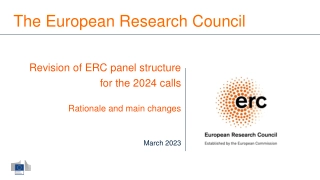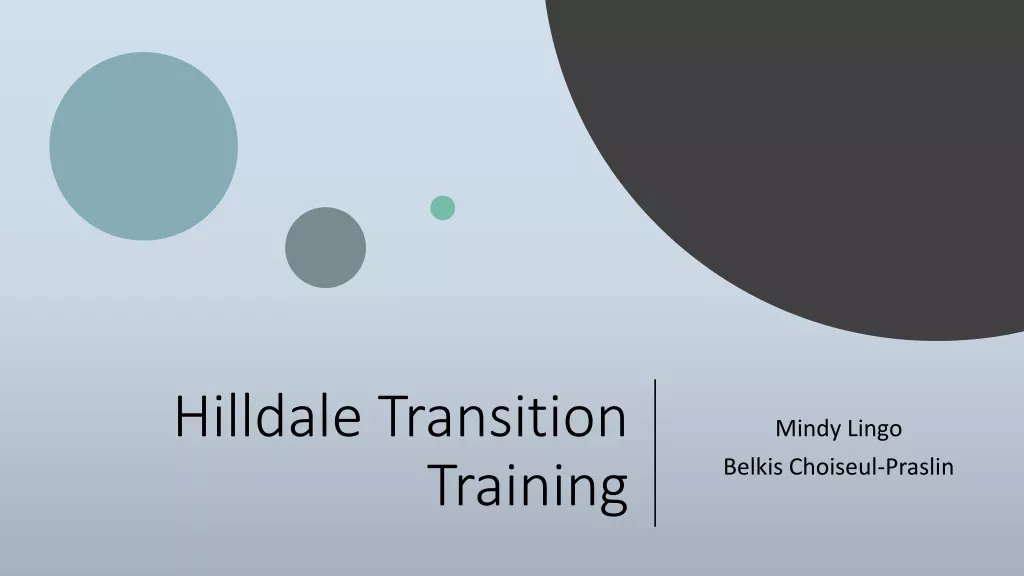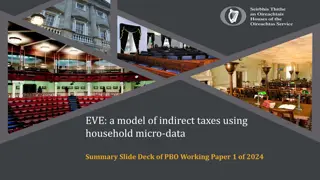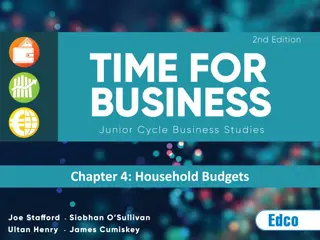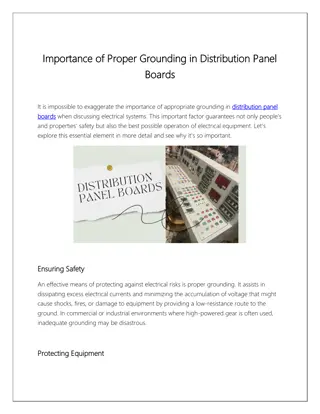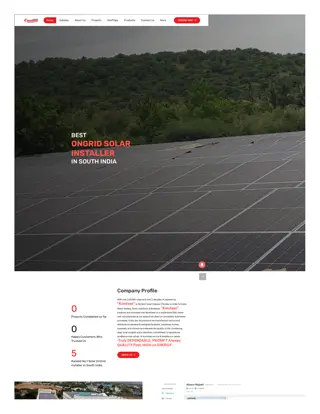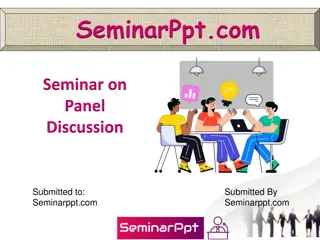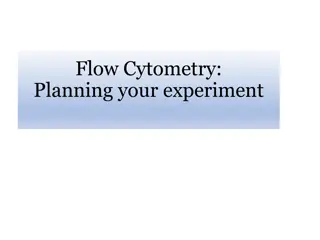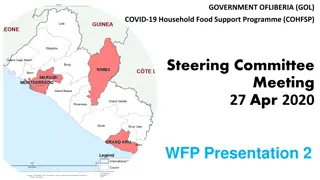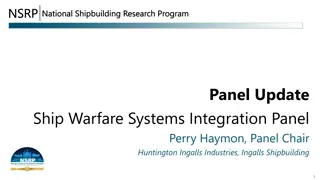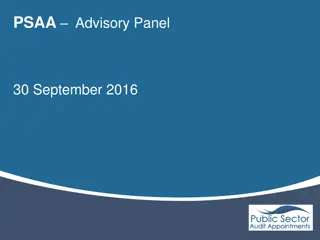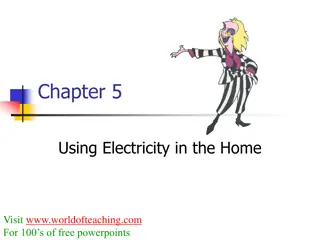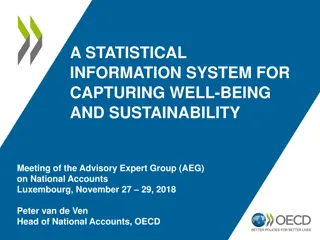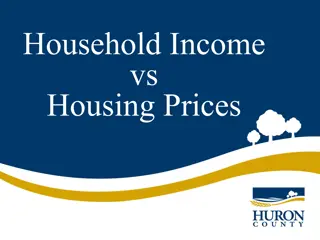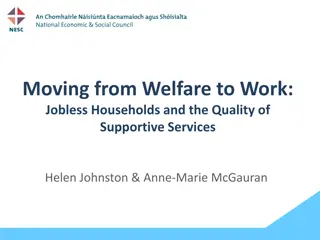Encouraging a Household Panel to Transition Online: Insights and Strategies
The study explores methods to incentivize a face-to-face household panel to participate online, focusing on cost savings and minimizing attrition rates. By mixing online and face-to-face data collection methods, the researchers aim to maintain data quality while reducing expenses. The experiment involves timing invitations and offering web bonuses to enhance household engagement in completing web questionnaires. The mixed-mode design seeks to find the optimal approach for transitioning the panel online effectively.
Download Presentation

Please find below an Image/Link to download the presentation.
The content on the website is provided AS IS for your information and personal use only. It may not be sold, licensed, or shared on other websites without obtaining consent from the author. Download presentation by click this link. If you encounter any issues during the download, it is possible that the publisher has removed the file from their server.
E N D
Presentation Transcript
Timing Isnt Everything, But Money Talks How to encourage a face-to-face household panel to go online? Gerry Nicolaas Carl Cullinane University of Essex, July 2013
Contents Background Design of Experiment Results Summary of Results and Conclusions 1
Background Switch to mixed mode data collection at wave 7 of Understanding Society Potential for cost savings Potential for reducing attrition 3
Context Longitudinal household panel Face-to-face interviewing of all household members at waves 1 to 6 Greatest potential for reducing data collection costs when an interviewer does not have to visit the household Previous experiment mixing telephone & face-to-face: Costs can be reduced BUT response rates suffer 4
Innovation Panel wave 5 Vehicle for methodological development & testing About 2,500 individuals in 1,500 households Main objective of IP5 = Determine whether it is possible to reduce costs by mixing web questionnaires and face-to-face interviews without sacrificing data quality Sequential mixed mode design starting with web 5
IP5 Design Experimental group Web only phase F2F phase, web open Control group No web F2F only phase 6 6
Research question Is it possible to boost the proportion of whole households completing web questionnaires by Timing the arrival of the invitation to go online? Offering a web bonus? 7
Design of experiment within mixed-mode sample
Design of experiment within mixed-mode sample (1) Timing of invitation to go online Random allocation of households to: Letter (+ email) to arrive on Friday Letter (+ email) to arrive on Monday Reminder letters (+ emails) sent 2 and 4 days later (2) Web bonus Random allocation of households to: No web bonus 5 per household member conditional on all completing online questionnaire 9
Design of experiment within mixed-mode sample Invite arrival on Friday Invite arrival on Monday No web bonus 270 265 households households Cond. 5 per hhld member 266 276 households households 10
Experimental effects on Web Response Full Household Web Response (%) 100 80 60 40 23.7 21.4 20 0 Monday Friday Base: IP5 WEB Sample (n=1077) 12
Experimental effects on Web Response Full Household Web Response (%) 100 80 60 40 24.7 23.7 21.4 20.4 20 0 Monday Friday No Bonus Bonus Base: IP5 WEB Sample (n=1077) 13
Effect of Bonus by Sample Type No bonus Bonus 100 80 60 34 33 40 30.5 18 20 9.4 8.6 0 W4 Responding W4 Non responding Refreshment Base: IP5 WEB Sample (n=1077) 14
Effect of Bonus by Upfront Incentives No bonus Bonus 100 80 60 40.2 37.4 40 22.6 18.8 17.9 13.5 20 0 5 10 20+ Base: IP5 WEB Sample (n=1077) 15
Unconditional Incentives Original Sample 5 10 Refreshment Sample 10 20 30 16 16
Effect of Bonus by Children in Household No bonus Bonus 100 80 60 35.4 33.3 40 22.8 22.8 20.6 18.2 16.4 20 3.7 0 None One Two Three + Base: IP5 WEB Sample (n=1077) 17
Effect of Bonus by Advance Mailing No bonus Bonus 100 80 60 43.8 36.3 40 20 6.5 5.1 0 Postal Valid email Base: IP5 WEB Sample (n=1077) 18
Effect of timing by Advance Mailing Monday Friday 100 80 60 41.9 38.3 40 20 6.8 4.8 0 Postal Valid email Base: IP5 WEB Sample (n=1077) 19
Experimental effects on Final Response Full household Partial household 100 75.6 72.8 80 23.7 18.1 60 40 54.7 51.9 20 0 Monday Friday Base: IP5 WEB Sample (n=1077) 20
Experimental effects on Final Response Full household Partial household 100 75.6 74 74.4 72.8 80 23.7 18.1 20.4 21.4 60 40 54.7 53.6 53 51.9 20 0 Monday Friday No Bonus Bonus Base: IP5 WEB Sample (n=1077) 21
Estimation of cost savings Web bonus of 5 compared to no web bonus: Small reduction in travel and mileage costs 15% reduction in interviewer fees Offsetting the cost of web bonuses reduces the saving in interviewer fees to less than 5% 22
Summary of results and conclusions 23
Summary of results Friday mailing had a small but diluted effect Web bonus increased full household web response Effect of bonus varied by a number of factors, e.g. Diminishing returns with larger upfront incentives Greater effect for households with children Greater effect when household contacted by email Web bonus did not increase final response rate But potential for cost savings 24
Limitations Small sample sizes Confounding of sample type and value of unconditional incentives sent with advance letter Estimation of costs 25
Points for discussion Timing to be looked at further? Potential for greater cost savings through targeting Large upfront incentives vs conditional web bonus- costs 26
Thank you If you want further information or would like to contact the author, Carl Cullinane T. 020 7549 7158 E. carl.cullinane@natcen.ac.uk Visit us online, natcen.ac.uk



